For Late Pennsylvanian rocks exposed in Western Pennsylvania, there are several publications one can pursue to help identify the area’s geology and fossil fauna. The following is a list of the publications I have reviewed and used. One can get a digital copy of many of them, but I enjoy physical books for reading. Many are decades old, but the fossils don’t change, only human identification. Also to consider are new finds that are absent from these books. More contemporary publications offer great information but still need time to embed it in researchers’ minds.
For each publication, I include the title, the authors, the year of publication, the number of pages, the number of plates, and the book’s thickness. While some may find recording the thickness to be a unique choice, I enjoy larger books. Another plus is any book with detailed photographic plates for use in fossil identification.
Pennsylvania Publications
The number of Pennsylvania-centric paleontology publications is few. However, many geology publications come from the state, and some include information about fossil fauna in the rocks. But as far as publications about fossil life, these are ok as a start.
Fossil Collecting in Pennsylvania, General Geology Report 40
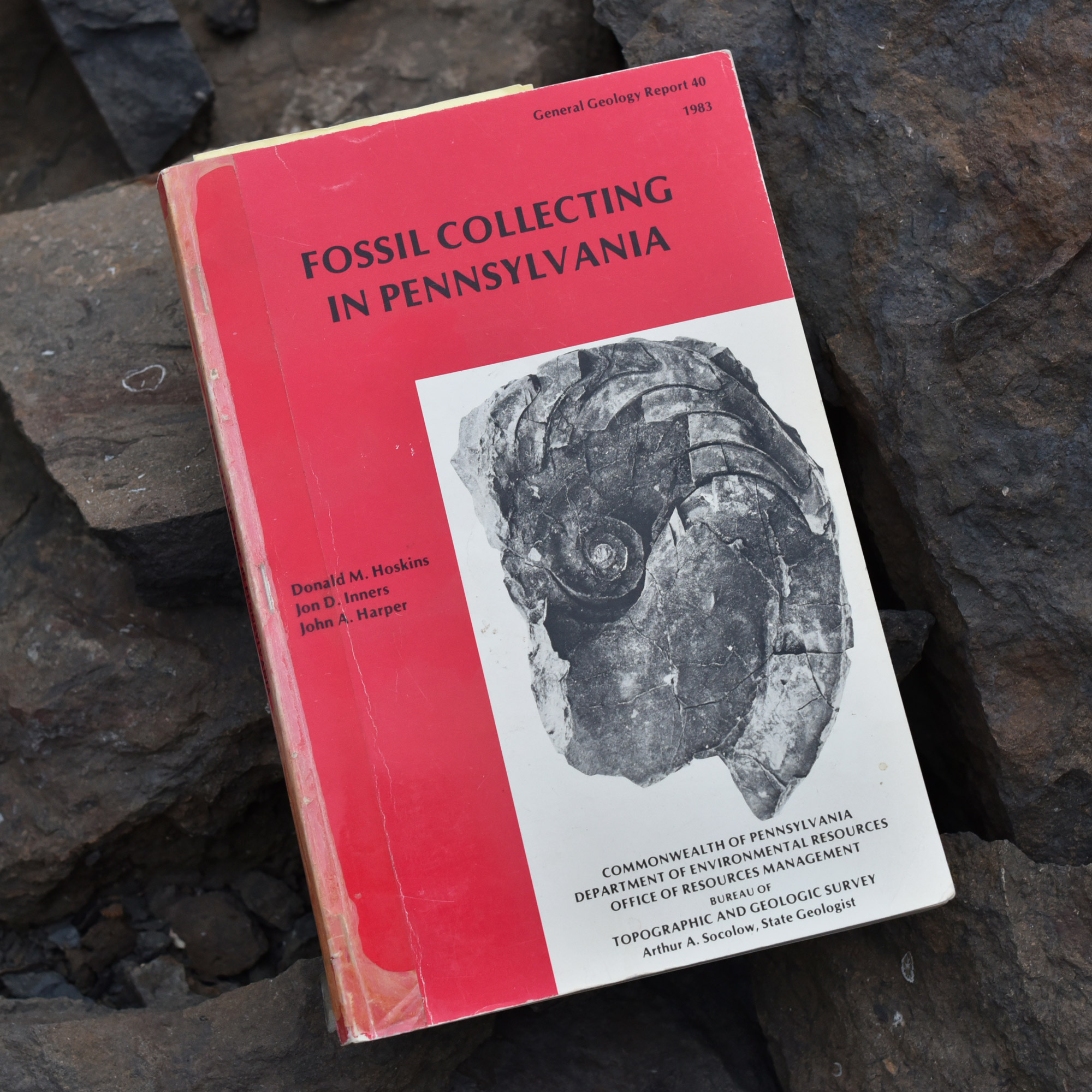
By Donald M. Hoskins, Jon D. Inners, and John A. Harper
1983 (3rd edition)
215 pages
21 fossil plates
½” thick
The first 50 pages of this book are about fossil collecting, use, and fauna in Pennsylvania. A later publication, Common Fossils of Pennsylvania, is a much-reduced version of this book. The following 135 pages are a comprehensive county-by-county collection of maps and locality descriptions for fossil collecting locations for most counties in Pennsylvania. The authors excluded several southeastern counties. Many sites need to be updated today, either a product of decades of erosion or changes in permissions or ownership of the land. As the book aged, many sites became off-limits. As a result, the state did not republish this book. The book lists fossil deposit locations in Pennsylvania and 21 fossil identification plates for fossils found in the state.
Common Fossils of Pennsylvania – Educational Series 2
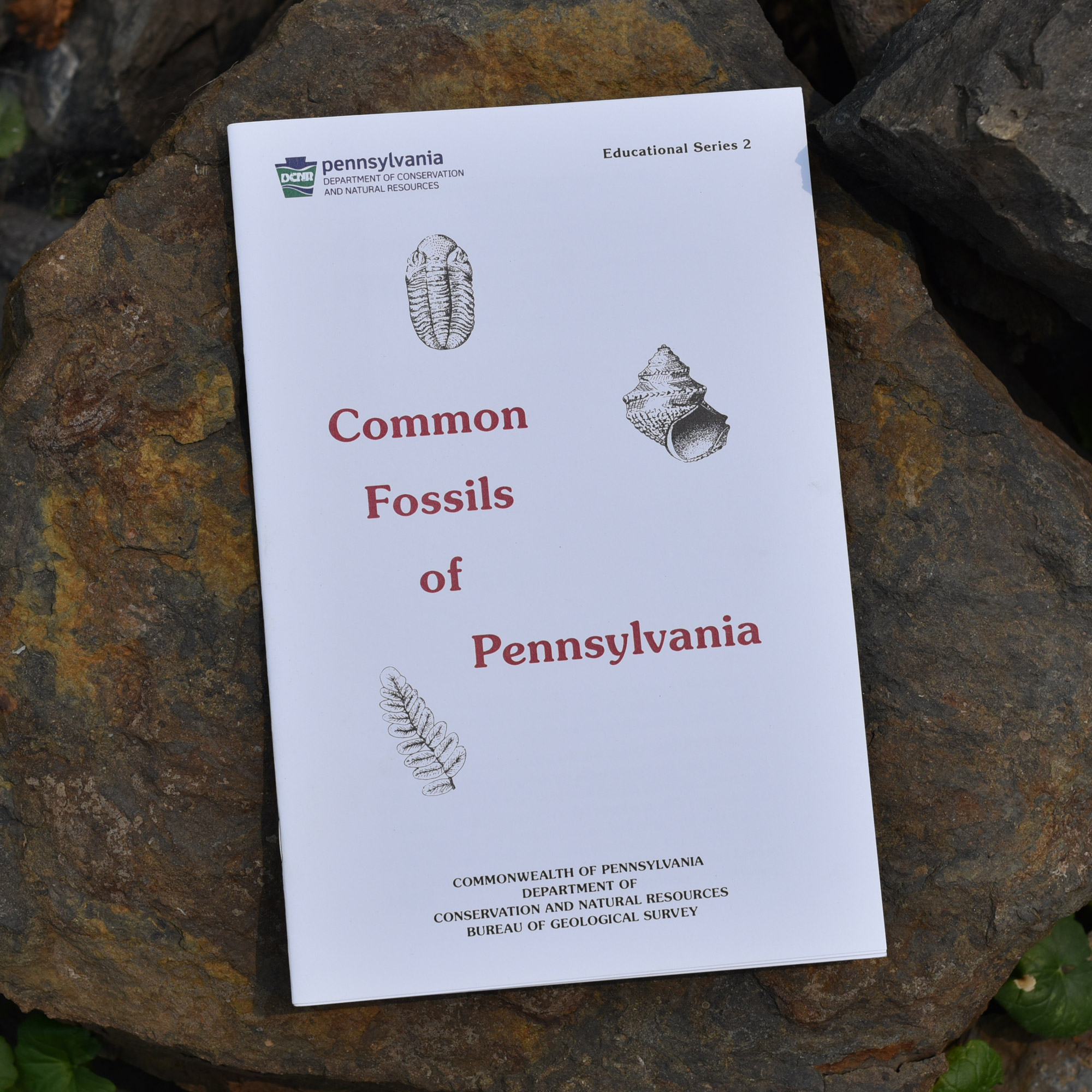
By Donald M. Hoskins
1999 (2nd edition)
18 pages
1/16” thick.
This publication gives readers a broad overview of fossils and information about seven categories of fossil animals. They are corals, bryozoans, brachiopods, bivalves, gastropods, arthropods, and echinoderms. It also includes a small section on plants.
It’s part of a thirteen-booklet series for Pennsylvania geology.
I remember seeing these offered at some state parks while visiting them.
Ohio Publications
Richard D. Hoare and Myron T. Sturgeon, two prominent paleontologists to write for the ODNR Division of Geological Survey, authored many of the Pennsylvanian-focused Ohio publications.
The Ohio Survey has published a large number of paleontological materials in comparison to the Pennsylvania survey. These paleontologists and Royal Mapes were drivers in many of the Pennsylvanian publications. In 2015, Dr. Mapes donated over half a million Upper Paleozoic specimens to the American Museum of Natural History.
Fossils of Ohio, Bulletin 70
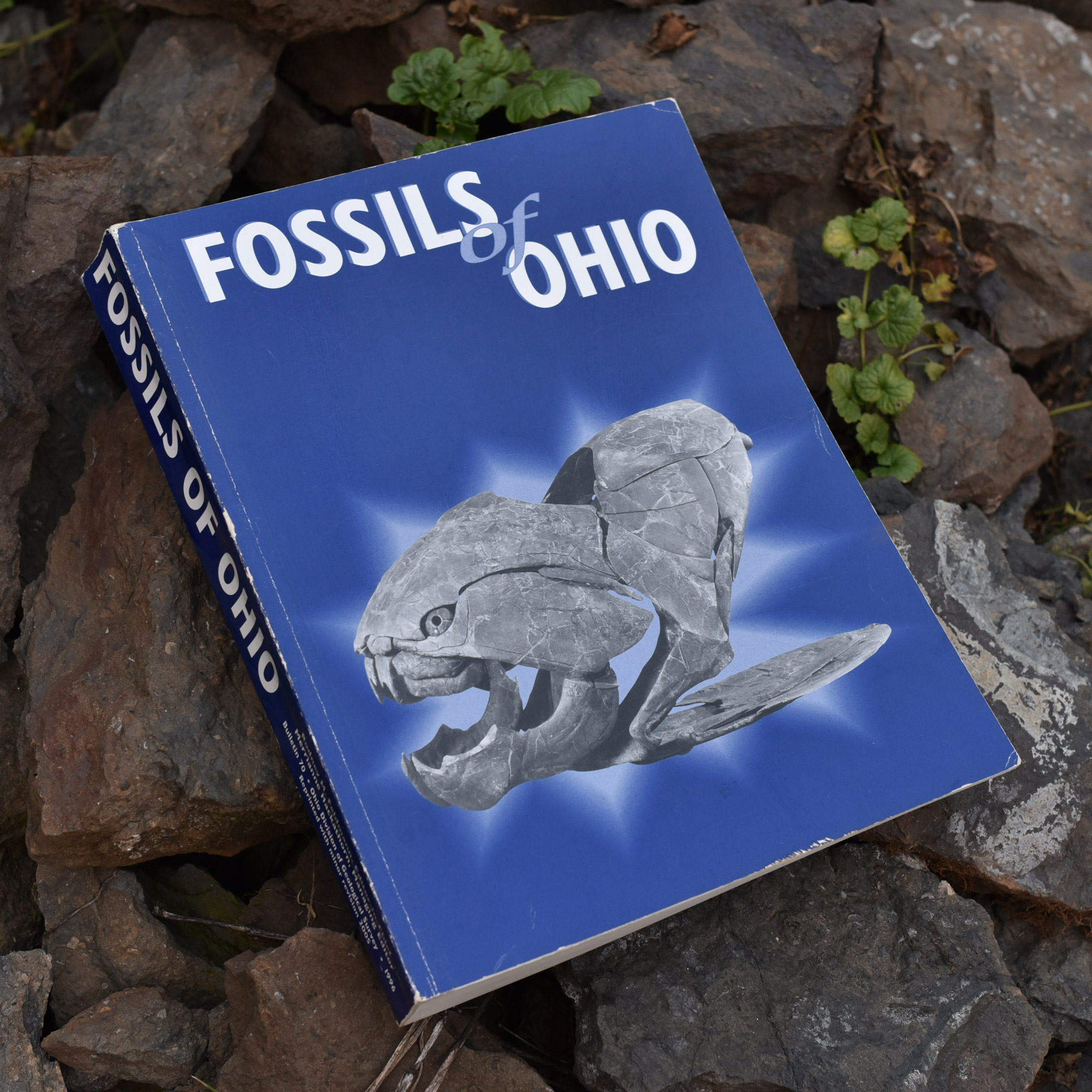
Rodney M. Feldmann, Marrianne Hackathorn (+22 other contributors)
1996, 2005 (Minor reprint)
577 pages
Countless plates & figures
1 ¼” thick
This book is the most extensive modern publication for fossils in the tri-state area. Many of the fossils also exist in Pennsylvania. Ohio exposes fossils from the Ordovician through the Permian, with many Pennsylvanian exposures in the eastern part of the state. The book is packed with information and is a must-have for anyone interested in Paleozoic fossils. Beware of resellers who often sell this book at twice its price. The ODNR Division of Geological Survey sells the text directly; you might have to call to order.
Pennsylvanian Cephalopods of Ohio, Bulletin 71
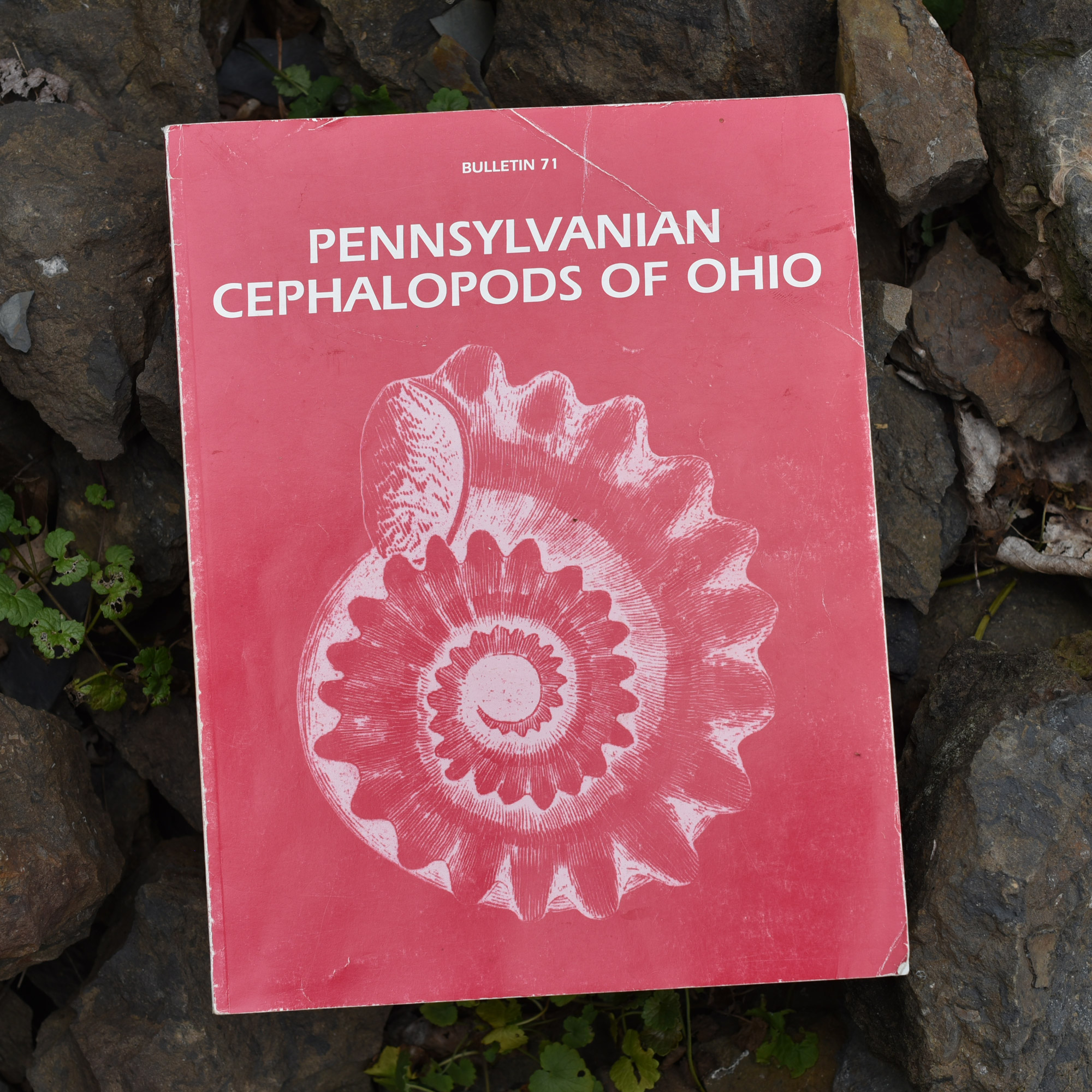
Part 1, Nautiloids and bactritoids: Sturgeon, Windle, Mapes, and Hoare
Part 2, Ammonoids: Mapes, Windle, Sturgeon, and Hoare
1997
260 pages (includes plates)
54 plates
9/16” thick
A must-have if you enjoy Pennsylvanian cephalopods. Budget problems with the ODNR Division of Geological Survey caused a delay of 14 years of publication. The editors made minor updates, and they published it in 1997. The book covers two major taxonomic groups of cephalopods, split into two distinct chapters. The same four authors contributed to each section, but Sturgeon leads the first one on Nautiloids and bactritoids, and Mapes leads the second on Ammonoids. Ammonoid recovery in the Appalachian Basin is rare and shows with the specimen selection. The midcontinent has many times more specimens, perhaps due to its location on the continental shelf. More information about this condition appears on page X of this book. The same advice for Fossils of Ohio applies to this book; purchase it directly from the ODNR Division of Geological Survey.
Pennsylvanian Marine Bivalvia and Rostroconchia of Ohio, Bulletin 67

Richard D. Hoare, Myron T. Sturgeon, Eugene A. Kindt
1979
77 pages, 18 plates
⅜” thick
This out-of-print publication is a good resource for plates and descriptions of Pennsylvania bivalves. This publication is currently out of print but is downloadable for free from the Ohio State University Knowledge Bank: http://hdl.handle.net/1811/78537
Pennsylvanian Brachiopods of Ohio, Bulletin 63

Myron T. Sturgeon, Richard D. Hoare
1968
95 pages, 22 plates
⅜” thick
Currently out-of-print. Pennsylvanian Brachiopods have undergone many naming revisions in recent years, and this volume is a record of older names. Much like Bulletin 67, you can download this publication for free from the Ohio State University Knowledge Bank: https://kb.osu.edu/handle/1811/78534
Pennsylvanian Trilobites of Ohio, Report of Investigations No. 142
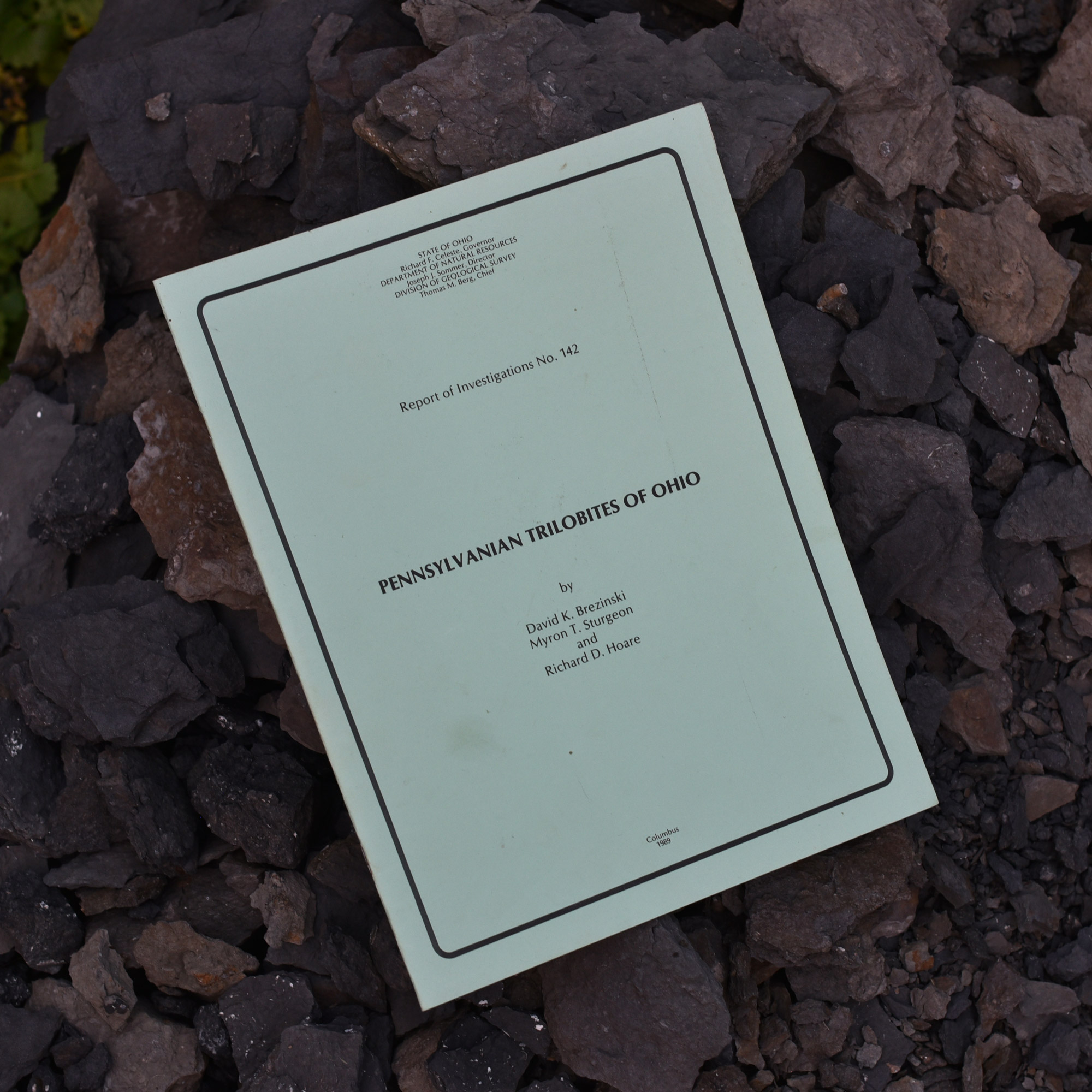
David K. Brezinski, Myron T. Sturgeon, and Richard D. Hoare
1989
18 pages, two plates
1/16” thick
This booklet is a comprehensive study on Pennsylvanian Trilobites from Ohio and West Virginia localities. There are descriptions of five species over three genera. An interesting aspect of the study shows morphometric changes in average pygidial (tail) width and length from the older Pottsville Group through the younger Conemaugh Group, as well as the number of pleural ribs and axial rings. Two plates showcase specimens from all five species in the study. One can still order this publication from the ODNR Division of Geological Survey. Or, the digital version is offered for free.
Fossil Focused
Index Fossils of North America

Hervey W. Shimer and Robert R. Shrock
1944, 1980 (7th ed.)
837 pages, 303 plates
2 ⅛” thick
This volume is a treatise on North American index fossils. Improvements occurred over several decades, with authors gathering up-to-date plates and descriptions of many index fossils used for stratigraphic correlation across North America. I once questioned why a particular genus was not in the book, to which the obvious reply was, “Because it’s not an index fossil.”
This book is thick, comparable to an extensive dictionary, and chock full of plates and illustrations. They range from hand-drawn to photographs, all collected over the ages. Some sections are curated by authors, such as one by Brookes J. Knight on Paleozoic Gastropods. Used copies can be found on Amazon.

The Treatise on Invertebrate Paleontology, Several Volumes
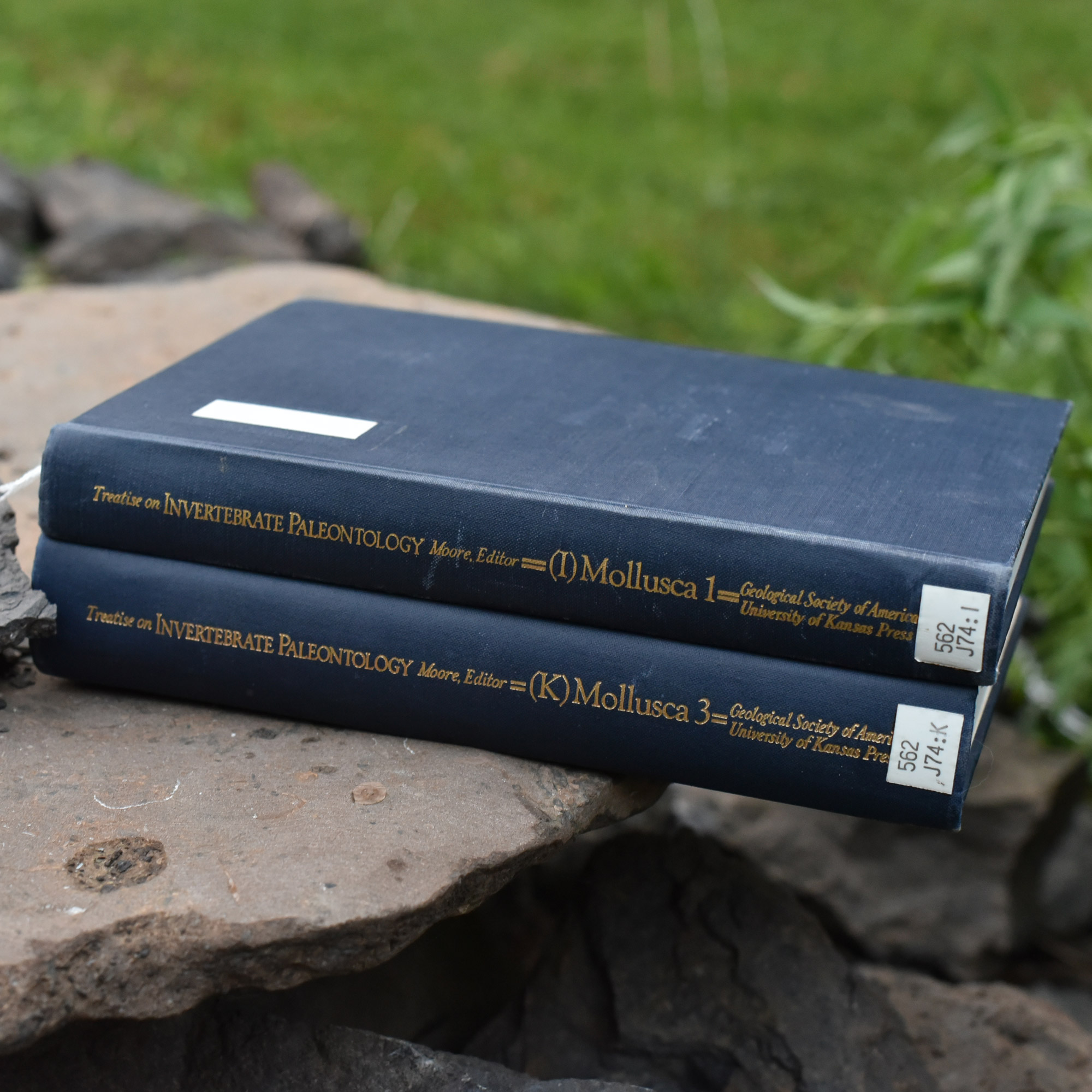
Several years of publication.
53 volumes as of 2022; some are in the same book.
300+ authors.
The entire set is several feet thick.
Raymond C. Moore of Kansas University founded and led the project’s early stages, producing its first volume in 1953. His original idea’s scope quickly expanded, resulting in significant research projects for several new books. I often use the gastropod and cephalopod volumes, but the editor published most figures as line drawings. Recent volumes use photographs and include additional modern scientific details such as a particular group’s genome or molecular phylogeny.
Each volume walks a reader through known facts about each subject. They do an excellent job of describing terms that can be confusing to new fossil collectors. As best as each volume can do, they attempt to show the stratigraphic distribution of significant groups over time. The description and illustration part of each book consists of broad order, family, and genera descriptions, but not separate species. Each genus also has taxonomic notes and a written geologic age range known at publication.
Nine older volumes are out of print; modern books replace an additional seven. For example, the 1959 Part O, Arthropoda 1 was superseded by Part O, Arthropoda 1, Trilobita (Revised), vol. 1 in 1997. You can purchase several older books online physically, but one should be patient in collecting books. These highly educational volumes sell at a premium, and the new ones are rare on the resell market. The entire set stands like a complete traditional encyclopedia set with blue or sometimes green coverings and gold lettering on the spines.
One may purchase many new modern volumes from the University of Kansas Paleontological Institute. You can obtain some out-of-print volumes in CD form. A standing membership to PalAss (The Palaeontological Association), SEPM (Society for Sedimentary Geology), or the Paleontological Society can qualify you for 20% off on volumes.
Update
In 2023 another considerable change came that brought the digital versions of the volumes into the realm of open access. You can access all of the material in PDF form for free.
Plants
Plant Fossils of West Virginia, Educational Series ED-3A
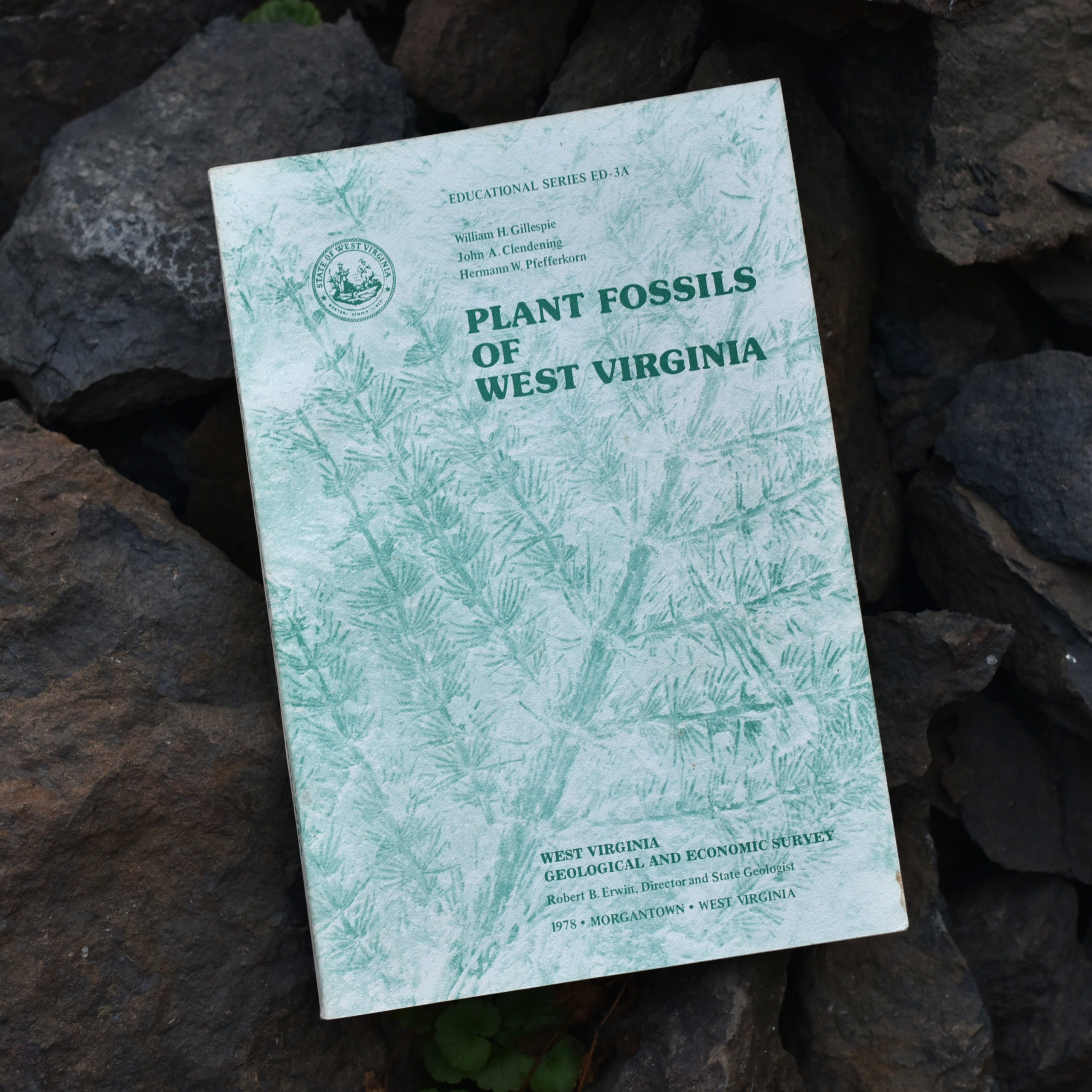
William H. Gillespie, John A. Clendening, Hermann W. Pfefferkorn
1966, 1978
172 pages, 64 plates, 20 figures
½” thick
This book is a newer version of popular sold-out books about plant fossils in West Virginia. Each new book improved on the last and took into consideration reader feedback. Surprisingly you can still order copies of this book from The West Virginia Geological and Economic Survey (WVGES) despite it being over 40 years old. You must look up the price, print out an order form, mail it, and wait. Several figures show examples of plant fossils down to individual species. He figures many ferns in detail, down to the shape of the leaf veins.
Many found William H. Gillespie to be at the top of his field. Unfortunately, he recently passed away at 90 in January 2021.
Plant Fossil Atlas from (Pennsylvanian) Carboniferous Age Found in Central Appalachian Coalfields
Thomas F. Mcloughlin Geologist, M.S.
2021
167 pages, several color plates, 26 figures
½” thick
This book provides several color photographs of plant fossils from central Appalachian coalfields. Western Pennsylvania has many of these fossils.
Non-Regional but Relevant Publications
Pennsylvanian Fossils of North Texas, Occasional Papers of the Dallas Paleontological Society Volume 6
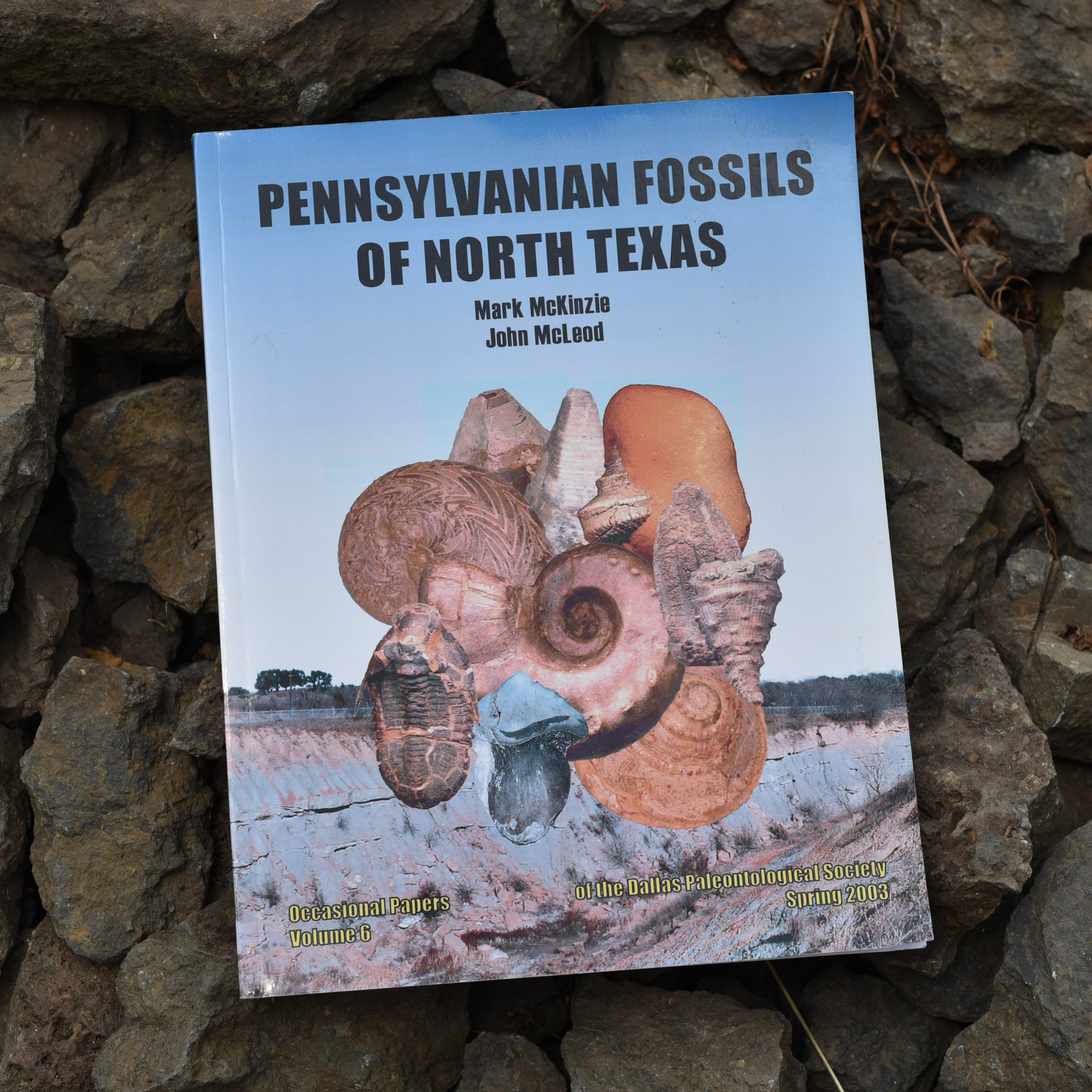
Mark McKenzie and John McLeod
2003
145 pages, several figures
⅜” thick
Many of the fossils illustrated in this publication appear in the Pennsylvanian rocks of Western Pennsylvania. The authors introduce the work in five chapters, describe three horizons, and finish with a chapter on the Late Pennsylvanian Marine Sharks of Texas. Many taxonomic groups are discussed, with figures accompanying most or all. This print-on-demand book is a solid addition to any collector of Pennsylvanian-aged fossils. The pair later produced a color field guide that showcases many of the same fossils but in a different more-consumable format.
Color Field Guide to Pennsylvanian Fossils of North Texas
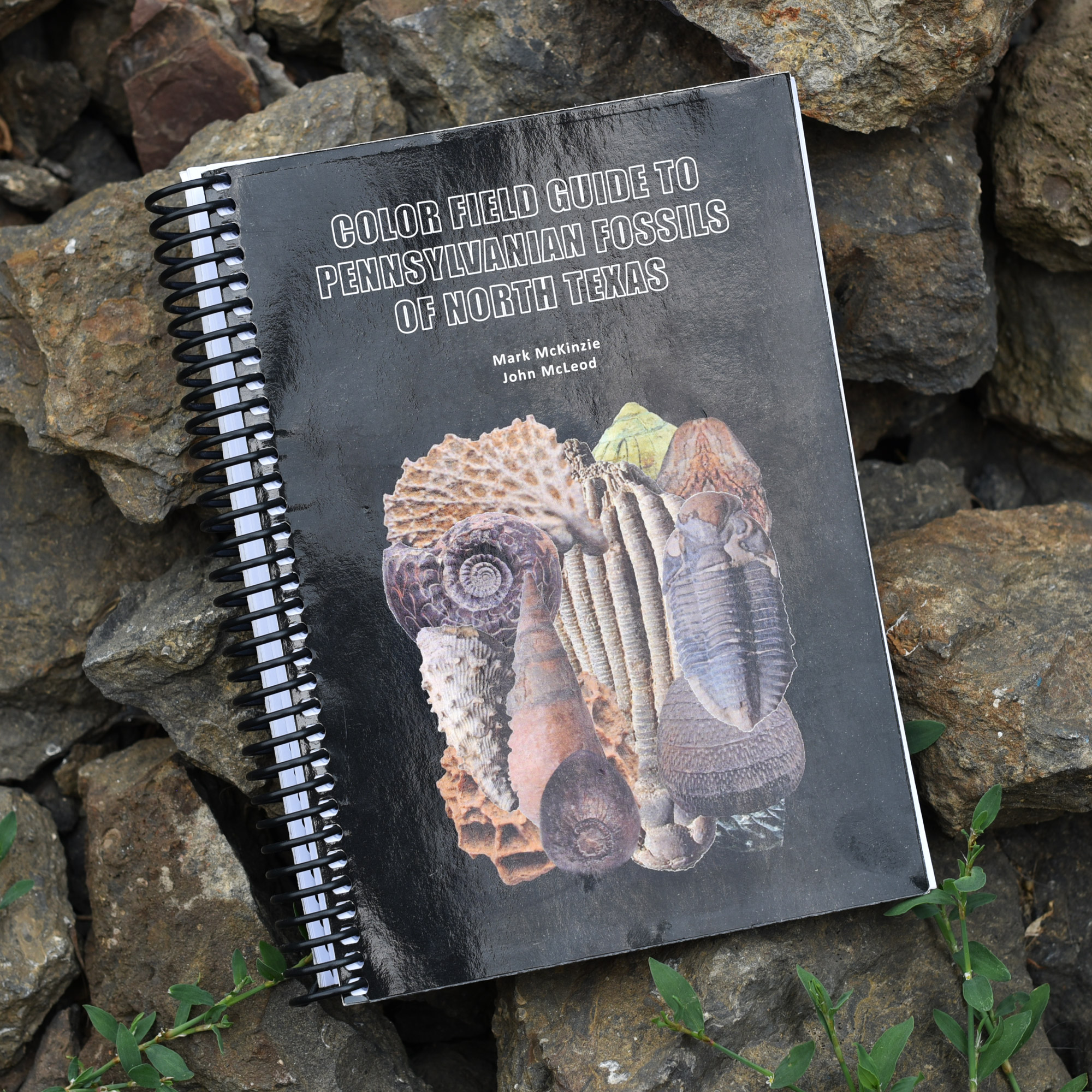
Mark McKenzie and John McLeod
2015, 2021
271 pages, 244 figures (they accidentally use figure 35 twice in the book for different subject matter)
¾” thick
This field guide is similar to their 2003 publication but arranged differently. The format is linear, giving each genus 1 or 2 pages with a name, taxonomic author, discussion, and color photographs. Many specimens are iron-stained or made of iron-rich sediments; thus, orange is a dominant color throughout the book.
The 2015 full-sized version omits Field from the title. The smaller 6 x 8 spiral-bound version feels minified. The authors respaced it for the smaller size but did not adjust the font sizing. It’s still readable and convenient to haul out into the field.
Desmoinesian Brachiopoda and Mollusca from Southwest Missouri
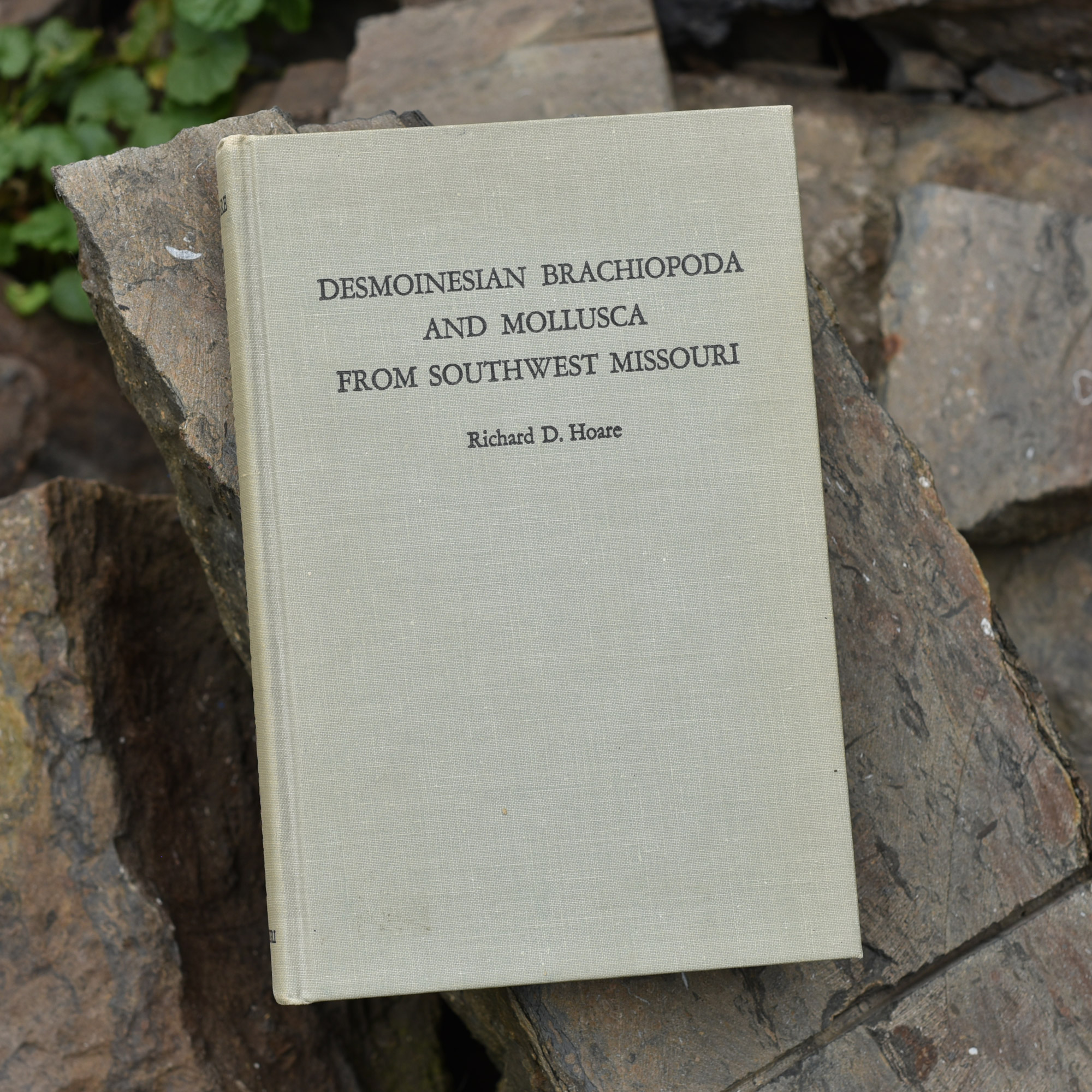
Richard D. Hoare
1961
263 pages, 23 plates
1” thick
This book on Middle Pennsylvanian fauna is outdated, and I recommend it for collectors of all Pennsylvanian paleo literature. However, quite a few of the fossils also occur in Western Pennsylvania. There are digital copies of this book online for those who are curious. The first 20 pages describe the area’s stratigraphy, while the rest focus on descriptions of fossils.
Find it used or reprinted on Amazon or read it free online at Hathitrust.
Newsletters
Pennsylvania Geology Magazine
Several authors
52 Volumes, 1969-2022
A bimonthly publication until 1992, when the state reduced it to a quarterly publication
This magazine was a bimonthly publication until 1992, when it was changed to quarterly. They first printed it in two colors, which became full color in 2009. It is published online currently, and one must only submit their email address to subscribe. This publication typically opens with a statement from the current Pennsylvania State Geologist, giving a state of the union or update. Geological Survey new hires and retirements are featured. The newsletter includes one or two fully referenced extensive featured articles about Pennsylvania’s geology. There are often paleontological articles; one helped connect me to the world of paleontology in Pennsylvania.
DNCR Bureau of Geological Survey – Magazine Publication Index
